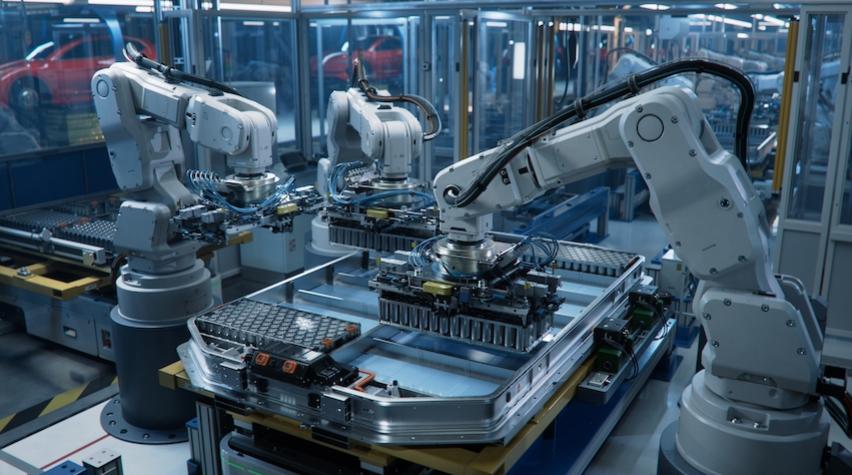
Engineers have taken apart electric vehicle (EV) batteries made by Tesla and BYD, China’s leading manufacturer, and discovered tradeoffs between performance, volume efficiency, and cost.
Bridging the gap between research and industry
The study is part of a larger project at the Fraunhofer Research Institution for Battery Cell Production in Germany that aims to bridge the gap between EV battery research and industry. Though companies like Tesla release some information on their batteries’ performance and specifications, little is known about specific materials and production processes. Research scientists need to understand what works on a large scale in order to scale up new innovations, notes Jonas Gorsch, the study’s lead author and the chair of production engineering of e-mobility components at RWTH Aachen Univ. “The first thing we wanted to do was get a benchmark of what is the actual design state-of-the-art,” Gorsch says.
Disassembly in the name of discovery
The research team ordered a BYD battery from a Chinese distributor and obtained a Tesla 4680 battery plucked from a new 2022 Model Y. They then ran each battery through an electrical characterization. Next, they disassembled the discharged batteries within closed glass boxes filled with inert argon gas to prevent any chemical reactions from skewing the results. They measured and weighed each component and took samples for scanning electron microscopy studies and energy-dispersive X-ray analysis. They also tried to deduce the production process used to assemble the battery components and the likely material cost per stored energy in each cell.
Cylindrical vs. prismatic
The team found that the two batteries use different formats. Tesla’s is a cylindrical cell with electrodes rolled up within a rigid can. BYD’s is a prismatic cell, which consists of stacked electrode sheets inside a rectangular casing. Tesla’s design is tabless, meaning that instead of using welded tabs of metal to connect cathodes and anodes to the positive and negative terminals of the battery, there is a conductive stripe running along the electrodes, reducing resistance and the risk of overheating.
Tesla was the first to bring the tabless design to market, but BYD’s battery has an innovation of its own. In stacked prismatic cells, Gorsch says, it’s easy for electrodes to become misaligned during production or from vibrations in the vehicle, which can lead to the cathode overlapping the anode, causing shorts. To prevent this, BYD uses a separator material that melts and sticks together when heated. The separator is slightly larger than the electrode sheets. When everything is stacked, the excess separator material is heated and pressed so that it closes each electrode sheet into its own separate unit, not unlike a laminator that one might use on office paper. “That was super interesting, because we hadn’t seen that before,” Gorsch says.
Both companies used laser welding to make their batteries, which is a process that uses a laser beam as a heat source for making precise welds. It was interesting to see that this laser welding technique works at an industrial scale, Gorsch adds.
Another surprise was the lack of silicon in the anodes of either battery. Silicon is considered a key material for increasing energy density, Gorsch notes, but both companies may have shied away from using it because silicon can swell during charging and discharging. This swelling limits battery life.
Energy density vs. thermal control
Tesla’s battery beat out BYD’s in energy density, but it puts off twice the heat per volume during charging as the BYD battery, meaning BYD’s design offers easier thermal management, the researchers wrote. These tradeoffs are the result of differing battery chemistries: Tesla uses a nickel, manganese, and cobalt oxide design (NMC811), while BYD uses lithium iron phosphate.
From the lab to the assembly line
The research team has already used their findings to benchmark the data on their own battery cells under development at the Fraunhofer site. “There is a huge gap between the lab and what researchers are able to do toward [industrial-scale batteries],” Gorsch says. “This research factory will try to close that gap. It will also be a space where industry and research can come together to work on things that are a little bit closer to large-scale production.”
Gorsch, J., et al., “Contrasting a BYD Blade Prismatic Cell and Tesla 4680 Cylindrical Cell with a Teardown Analysis of Design and Performance,” Cell Reports: Physical Science, doi: 10.1016/j.xcrp.2025.102453 (Mar. 6, 2025).
This article originally appeared in the Update column in the April 2025 issue of CEP. Members have access online to complete issues, including a vast, searchable archive of back-issues found at www.aiche.org/cep.


